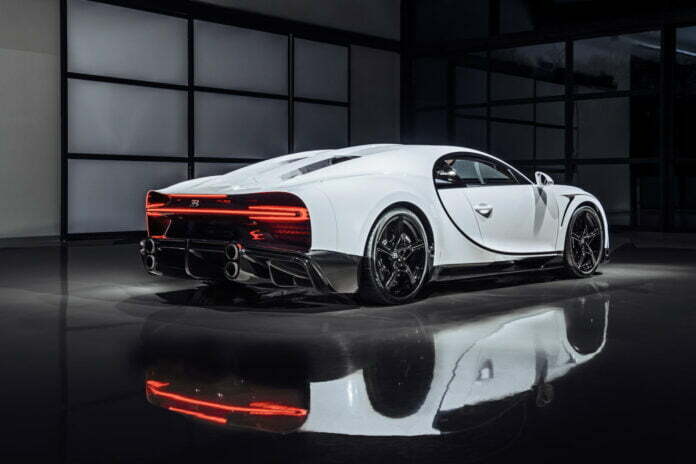The 8.0-liter W16 engine has been propelling Bugatti’s hyper sports cars for almost 20 years. The only 16-cylinder engine in the world to be used in a car. This look back at the story of its evolution and development is a declaration of love to one of the most impressive powertrains ever created.
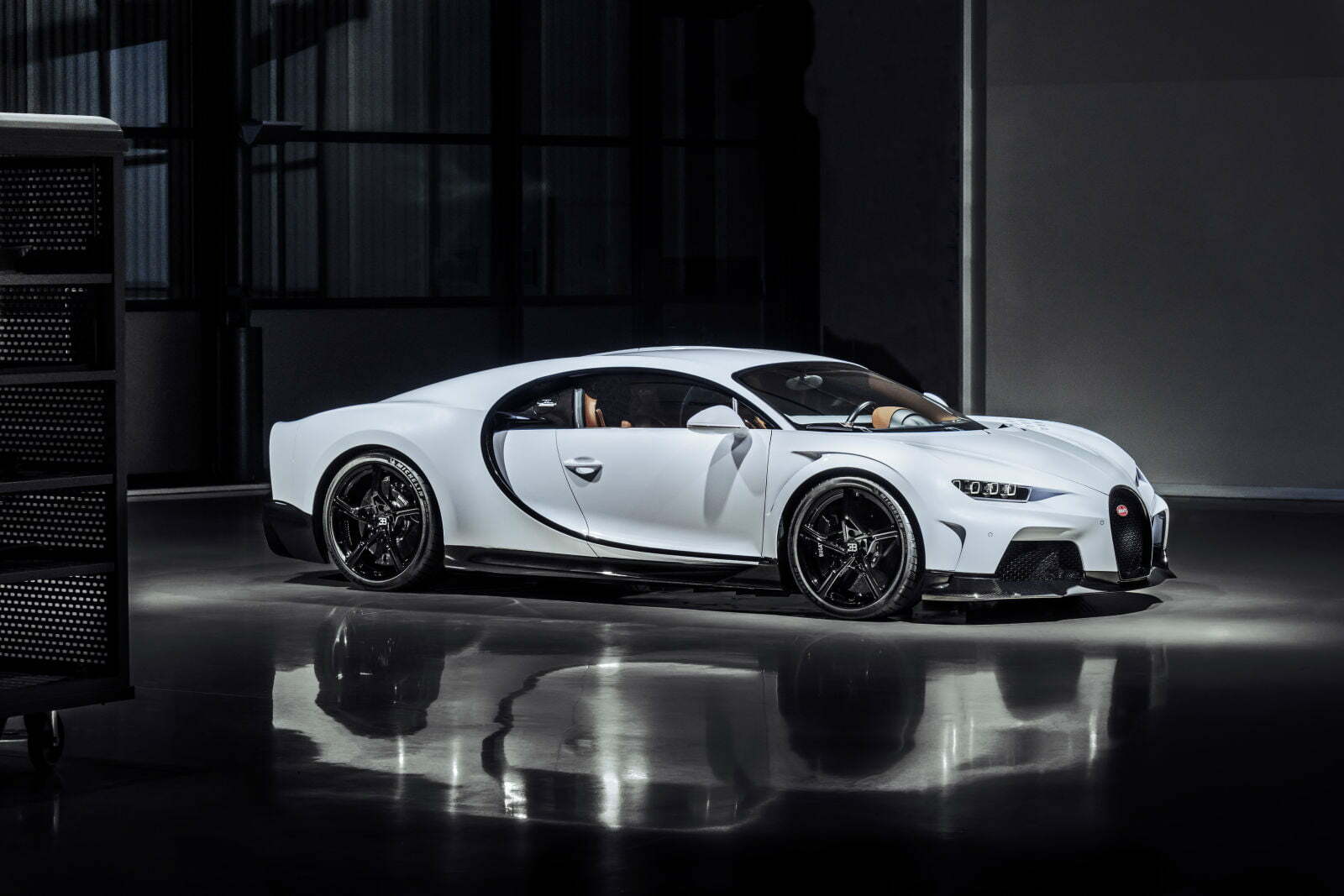
In 1997, standout engineer Ferdinand Karl Piëch, Chairman of the Board of Management of Volkswagen AG at the time, presented VW’s Head of Engine Development Karl-Heinz Neumann with the initial idea, drawing it on an envelope while traveling on the Shinkansen high-speed train from Tokyo to Osaka. His idea was an engine with 18 cylinders, but it would subsequently be modified to become the W16 we know today. A fitting homage to the 16-cylinder engine developed by Ettore Bugatti himself.
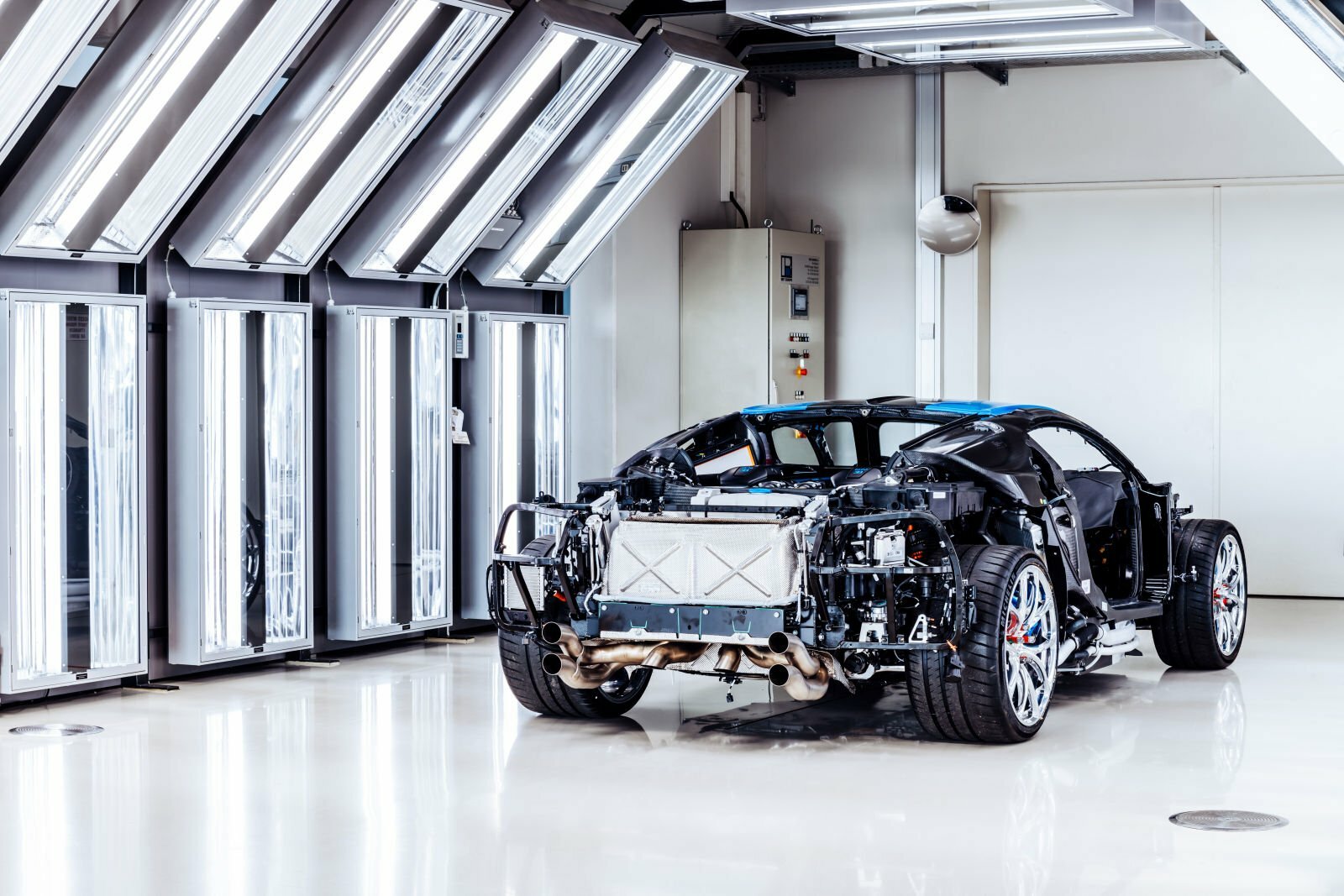
Gregor Gries, who was one of the first Bugatti employees during its rebirth 20 years ago and, until February 2022, was the company’s Head of Technical Development, reminisces: “At the time, no one really believed there could be a vehicle for the road that boasted 1,000 PS. We wanted to prove we could construct an engine that was not only powerful, but also manageable.” The engineers started from scratch. “We had to engage in basic development for every component; every vehicle part had to be constructed anew and tested – even the engine test bench. The only thing we didn’t change was the pencils we used for drawing,” says Gregor Gries, laughing. “We felt like Ettore Bugatti back in the day – he too always developed his own tools.”
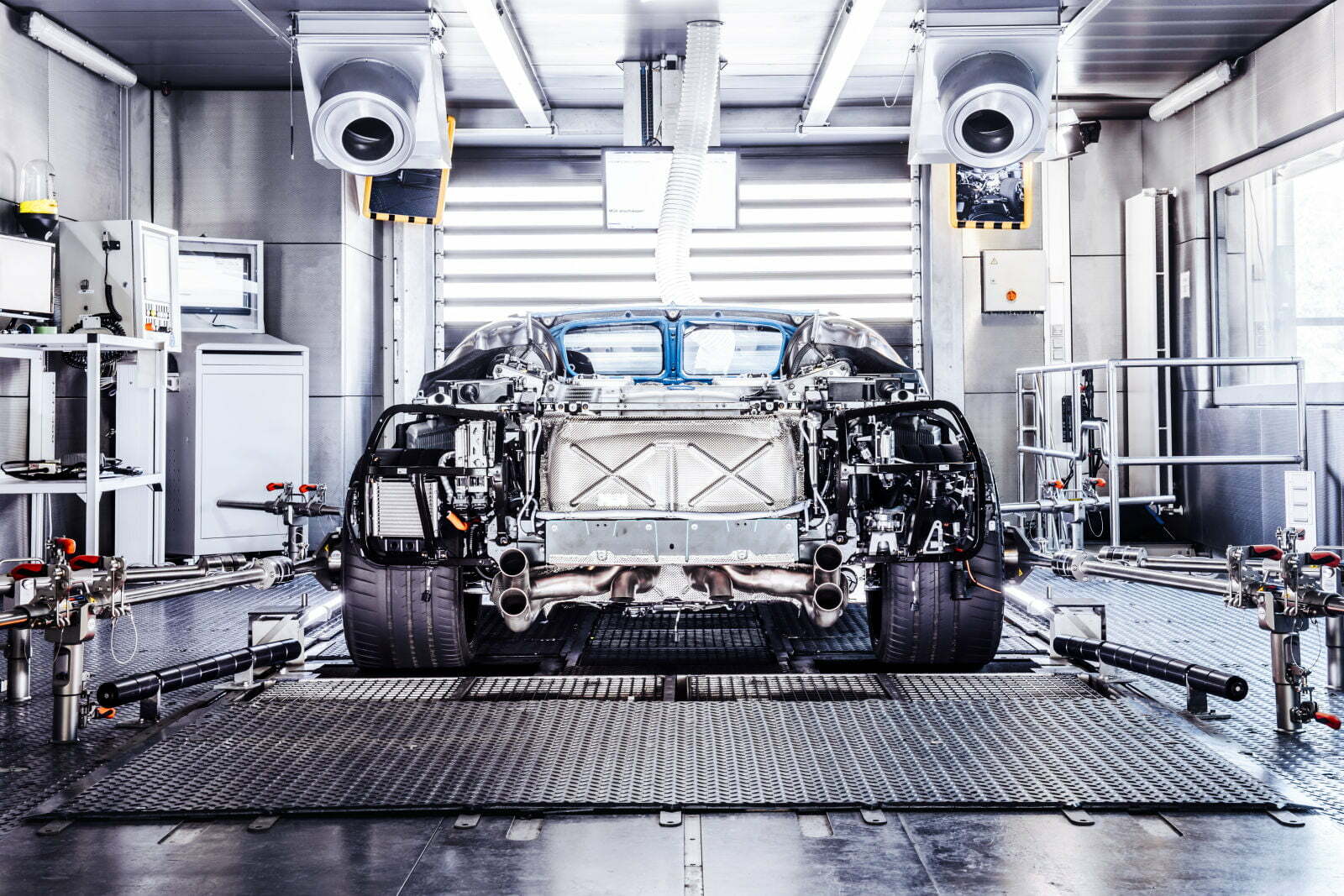
The engineers took Ferdinand Piëch’s idea sketched on an envelope and evolved it into a production reality. No bigger than a V12, and weighing around 400kg, the engine has the unique arrangement of cylinders in a ‘W’ configuration to thank for its compact size. Two eight-cylinder blocks are set at an angle of 90 degrees to one another, boosted by four exhaust gas turbochargers. But the challenges that Karl-Heinz Neumann and his team faced to transform the W16 into a reality were immense.

“Back then, there was no literature or empirical data for production engines with more than twelve cylinders or for production vehicles that could go faster than 350 km/h,” relates Neumann. “One thing proved to be a particular headache – the car had to stay grounded, its power had to stay on the road – which isn’t easy at these speeds. But proving it was possible to construct an engine that could deliver this was incredibly cool. There was a real sense of fulfillment when the W16 was finally up and running.”
Bringing the engine to life required more than 3,500 individual parts, each assembled by hand, and the work monitored throughout by test computers. On its first ever test in 2001, the double biturbo engine achieved the required 1,000+1 PS right off the bat – the theory and the execution could not have been better. But such were the leaps in performance that traditional engine test bench and ventilation systems could not cope with the new W16 – new systems had to be specially developed. There were also new requirements not previously asked of a production vehicle, such as the fact the very hot exhaust gas needed to be channeled. A titanium exhaust system on a scale not previously seen in the automotive sector was ultimately part of the solution.
With performance secured, the engineers turned their attention to smoothness and reliability. As a 16-cylinder set up offers naturally smooth running, detecting a misfire or knocking in the engine by traditional methods would be unreliable. Bugatti therefore developed Bugatti Ion Current Sensing (BIS) to monitor the ion current flowing at each spark plug. If the system detects knocking combustion or a misfire, the ignition timing is slowed, the cylinder deactivated, or the boost pressure reduced. Every single cylinder can run right at its limit of performance. “From the outset, our aim was to generate maximum engine performance in a stable, clean manner,” explains Gregor Gries, former Head of Development at Bugatti, who has been responsible for engine and transmission development since Bugatti’s rebirth.
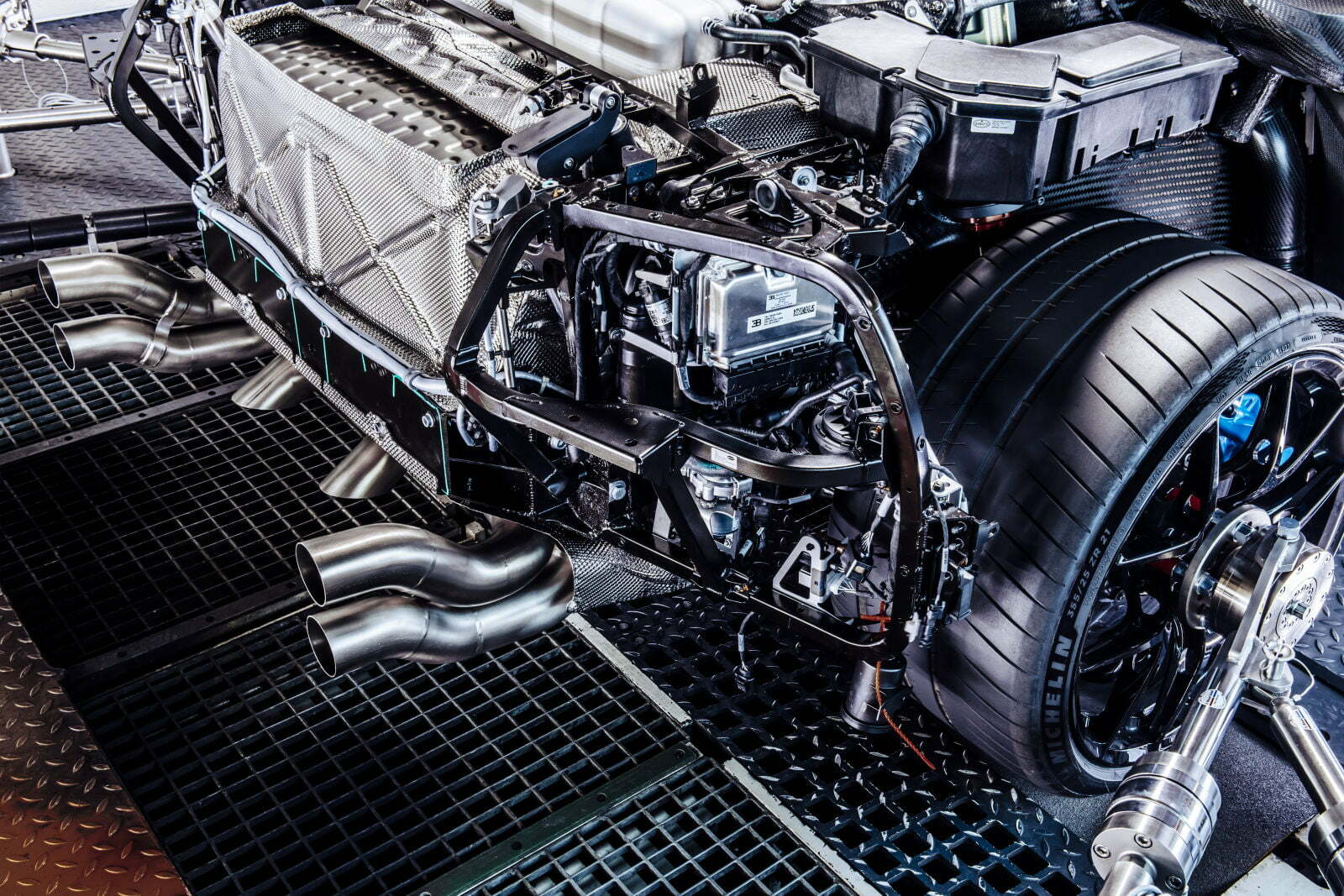
Absolutely crucial to the continued reliability of the W16 engine was its cooling system and – as you would expect – it was engineered on a scale never before seen in the automotive industry. A complex water-cooling system, featuring two water cycles, keeps the W16 within the required temperature range, even at extreme full loads. 40 liters of water flows through the high-temperature cycle with three coolers in the front end to keep the engine at its operating temperature. The low-temperature cycle with a separate water pump contains 15 liters of cooling water to bring the turbochargers’ heated charge air down by as much as 130 degrees in two heat exchangers on the engine. There are also coolers each for the differential oil, transmission oil, and engine oil, as well as a heat exchanger for the air conditioning system. The W16 is incorporated into the Veyron as a longitudinally mounted mid-engine with seven-speed dual-clutch transmission located in front of the engine.
Turbochargers are usually added to boost the power of small engines. In the case of Bugatti, the basic motor already boasts sufficient power output, but the four turbochargers build on these strong foundations to create something truly incomparable. “Being on the road with the W16 means having a limitless feeling of power and performance, of infinite performance. Whatever the speed, the engine has sufficient reserves for additional acceleration in any situation. When a quick switch is made from cruising to fast driving, the W16 remains smooth and commanding, and never feels strained. This unique boundlessness is what our customers find so beguiling,” relates Pierre-Henri Raphanel, Bugatti’s Pilote Officiel, who has driven Veyron and Chiron for well over 100,000 km.
The Veyron 16.4 and its derivatives Grand Sport, Super Sport and Grand Sport Vitesse have become prized collector’s pieces. With the Chiron, the engineers faced the challenge of developing a similarly sophisticated but even more luxurious and more powerful successor model. They wanted to make the W16 more powerful, quieter, and more cultivated, and therefore once again pushed the boundaries of what’s technically feasible.
Bugatti tested the 16-cylinder engine prior to production with the aid of computer simulations and on a newly developed engine test bench. The Chiron engine ran for over 16,000 hours during development. In addition, more than 500,000 test kilometers were completed in the vehicle in order for the engine to live up to Bugatti’s demanding quality standards. The engine is manufactured at the Volkswagen engine plant in Salzgitter – in a separate room reserved exclusively for building the W16 engine. It takes two experts six days to meticulously manually assemble the engine’s 3,712 individual parts. The finished engine is then carefully packed and transported to Molsheim, where the engine and transmission are put together as the first step in the Chiron’s final assembly at the Bugatti Atelier.
Photos credit: Bugatti
Discover more from SNAP TASTE
Subscribe to get the latest posts sent to your email.



